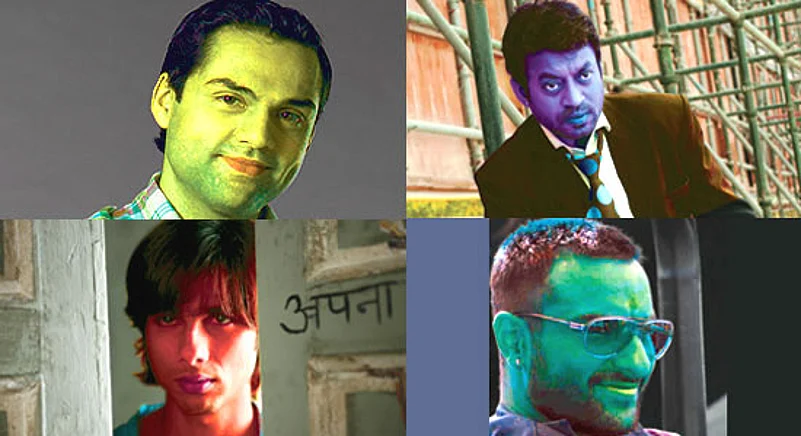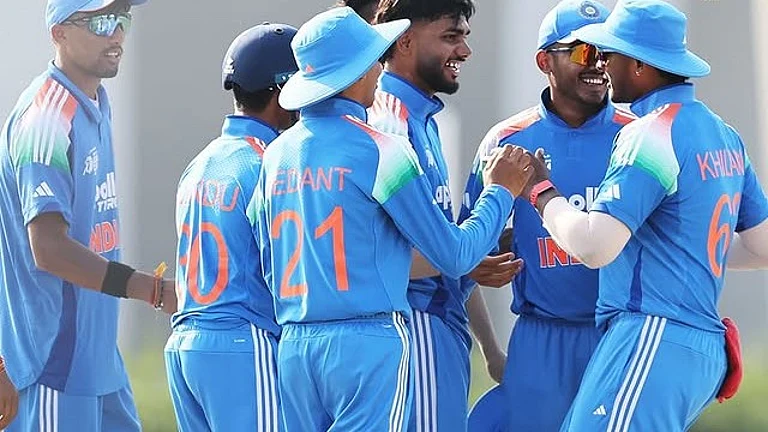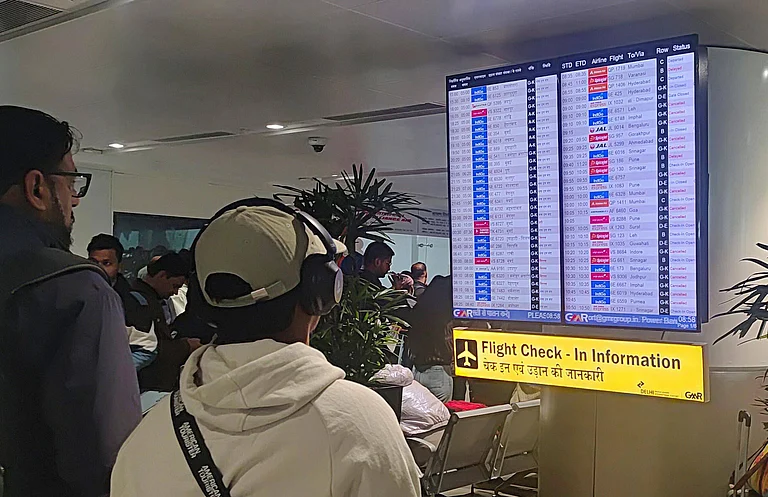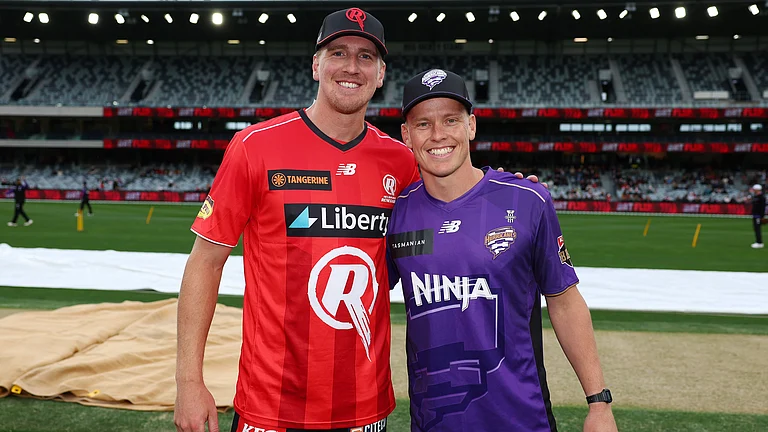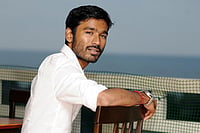When stories change, so do the characters in them. Earlier, when stories revolved around joint families laughing and crying together (like Do Raaste), a villain (or, likelier, a vamp in the form of a daughter-in-law) was needed to rupture the gleaming edifice of oneness. Or when stories were based on an innocent wronged by society (like Arjun), a villain was needed to give face to the corruption that caused the loss of innocence. And, as those kinds of stories have receded to make way for multiplex-friendly pop-movies, those villains too have vanished. There aren’t too many joint families on screen anymore, and neither do many films concern themselves with social issues. Dramatic tension is engineered through circumstance, now our reigning villain—not a specific person but an unfortunate chain of events.
The lovers in Love Aaj Kal are split by the circumstance of being in different continents. The wayward twin in Kaminey is due to the circumstance of an unfortunate childhood. The chain of dastardly events unleashed by the protagonists of London Dreams and Omkara is less the result of any inherent evil than the circumstance of a weak will. (Even the ostensible villain of Omkara isn’t the all-out-shades-of- black bad guy from the earlier days; his loyalty is swerved by the circumstance of a coveted post finding its way to someone else.) It’s only in the stories about gangsters (Sarkar) or religious intolerance (Aamir) do we find, any longer, characters that can be classified as villains, though even they can be excused under exonerating circumstances (in these specific cases, the favoured son being chosen over the older son, or the tangle of racial fear in the world we live in today, which causes minorities to opt for offence as the best form of defence.)
That, I feel, is the key to the vanishing villain. We live in a more complex world, where good and evil aren’t so easily demarcated. We do not look at the protagonist of Dev D as a villain, though even a few decades ago, such extreme self-absorption (along with “vices” like smoking and drinking) would have been shunned in a hero. In those sunnier days, if a character thought only about himself, the moral hand of fate would bear down upon him—there would be, say, a mandatory jail sentence, or the temporary loss of a loved one. When Dev Anand sold tickets in the black market in Kala Bazaar or when he embarked on an affair with a married woman in Guide, he was expelled from paradise (even if only for a brief while) before being allowed to rejoin the company of angels.
But the angels and demons are indistinct today—not in the sense of our being unable to distinguish between good and bad, right and wrong, but more along the lines of the good being wedded to the bad, the wrong appearing at times right. In a more innocent age, the bad was so outlandishly segregated from the good that it came with a special set of accoutrements—a number of stolid henchmen, a near-naked moll, a den filled with twinkling gadgets, and most importantly, the echoes of cackling laughter from a head thrown back, that unmistakable sign that darkness resided in the hearts of these men. Those films were different too, distilled as they were from our own archetypal myths of good and evil. Rama was good and Ravana was bad and that was that. If there was an element of “bad” in Rama’s chauvinistic requirement of Sita having to prove her chastity through the agni-pariksha, or if there was the “good” in Ravana that allowed him to establish a great, golden empire (a ‘sone ki Lanka’) before the fatal folly of abducting another man’s wife, we were not interested.
The early films of Amitabh Bachchan did a lot to tilt the balance. You could lay the blame for his badness in Deewar on circumstance, but how could you explain away his criminal in Don? Even with the compensatory comfort of a “good” counterpart, it was the bad Don who was remembered—for his panache, for his lines—so much so that when Farhan Akhtar remade Don, he resurrected the villain as the protagonist. Good died helplessly in the hands of Evil. The all-bad villain is about as much use now as the moll, who was needed earlier to wear short skirts and show off cleavage—these duties have passed on to the heroine, just like the badness of the earlier villain has percolated down to the milk-white hero and resulted in shades of grey more suited to our times.
Besides, where are issues of morality being explored in the movies any more? We seem to have love stories, coming-of-age stories, amoral gangster stories—but with the rare exception of a Shikhar, where are the movies that weigh the easy rewards of being bad against the hard-earned gains of leading the good life? That dichotomy has all but disappeared. The only truly-evil people we see on screen is in the rare throwback to the archetypal masala entertainer (Ghajini, Wanted), which operate on Manichean black-and-white ideologies. And it’s interesting to note that, despite the success of these films, we haven’t seen a slew of me-too announcements. They appear to be one-offs rather than a revival—at least where Hindi cinema is concerned.
But in regional cinema, at least in the mass-entertainer masalas in Tamil and Telugu, the villain is a thriving presence. Even as newer stories are being explored, the older archetypes haven’t been abandoned. There is room, it appears, for everything—black, white, and the shades of grey. The relative lack of penetration of the multiplex mentality may have something to do with this. Hindi cinema has learned that maximum profits can be made from the handfuls of multiplexes in a handful of metros—the other audiences, the more traditional Hindi film audiences, have been abandoned. The hipster movie (with its borderline-effete, pink-tee heroes) hasn’t yet made its presence felt elsewhere, at least not to the extent in Hindi cinema—and that’s why there still are macho-male stories about good triumphing over evil. The villain hasn’t vanished, exactly. He just doesn’t speak much Hindi anymore.
(The writer is a film critic with The New Indian Express.)






